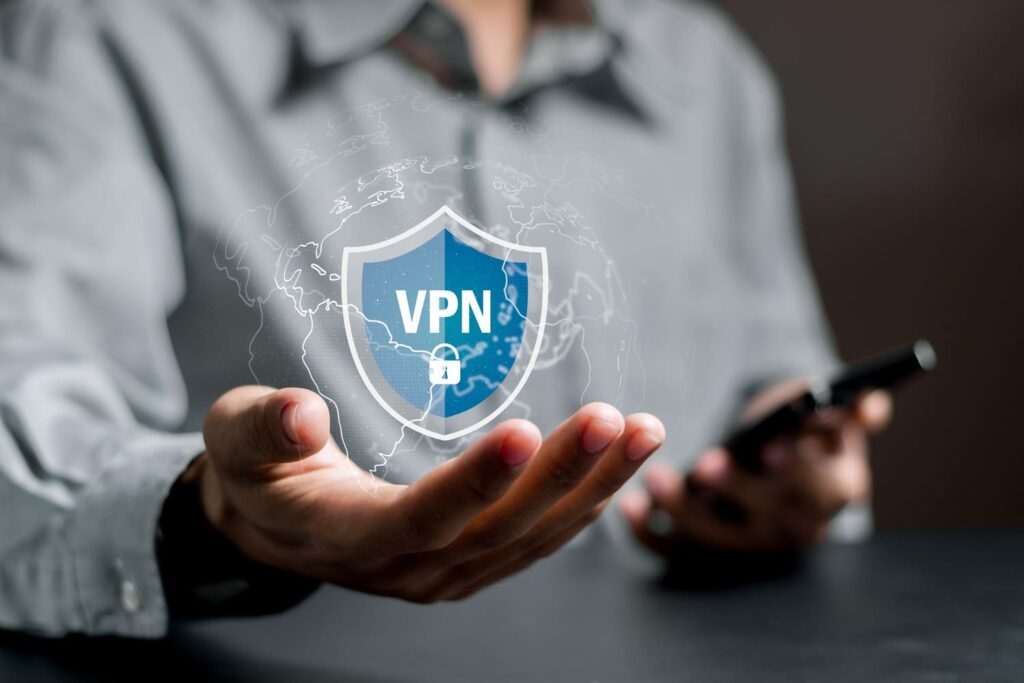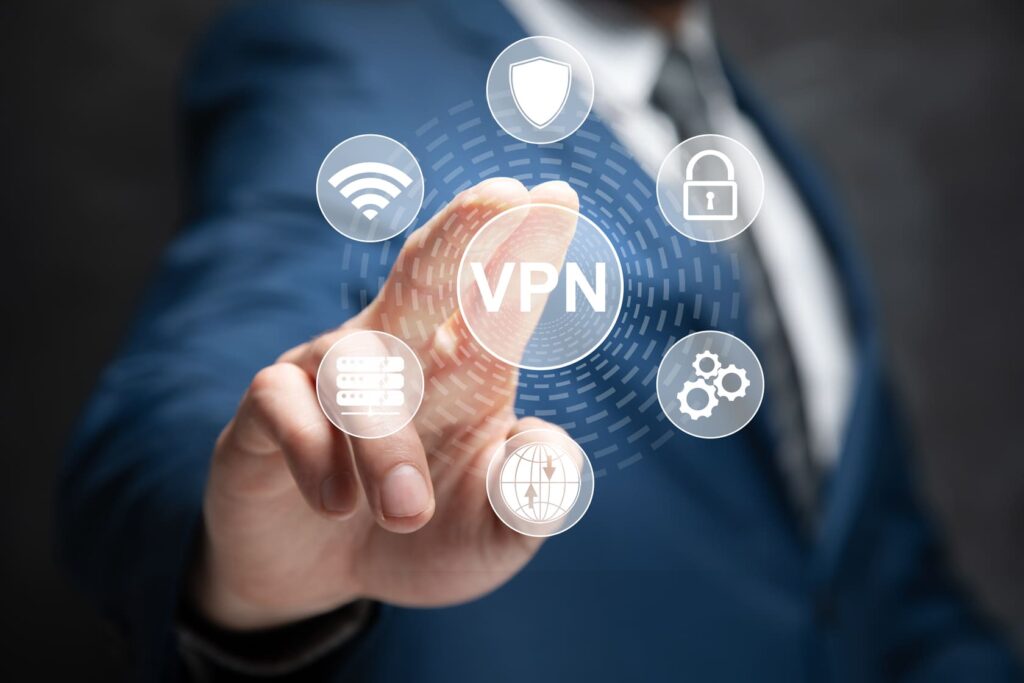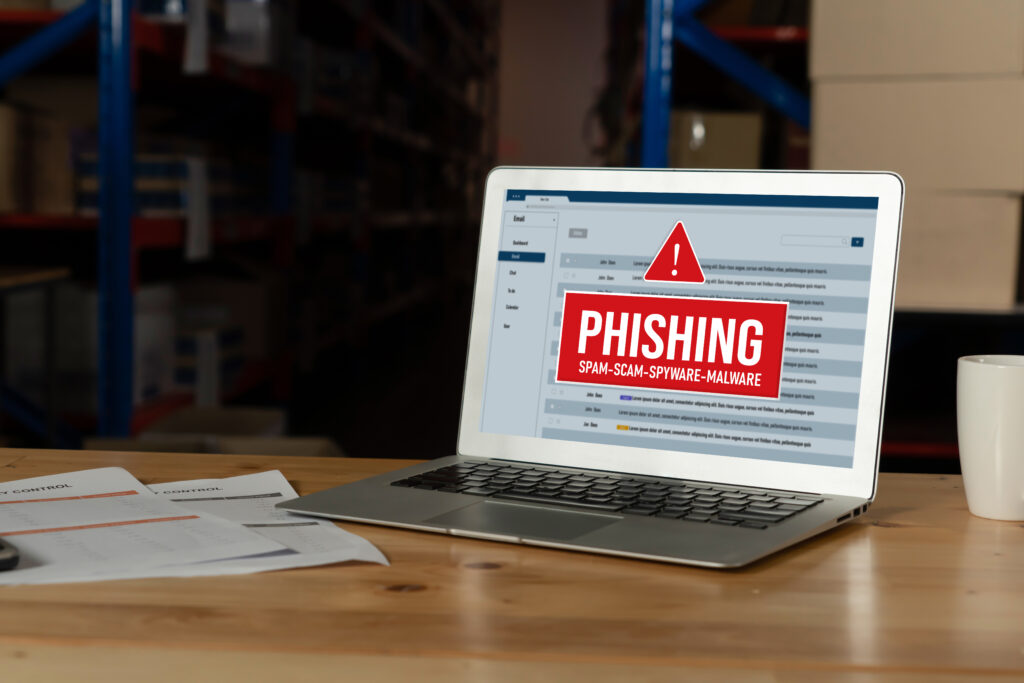1. Introduction: Why VPNs Remain Essential in 2025
Remote work is no longer an alternative, but a part of the routine for thousands of companies worldwide. This transformation has brought gains in flexibility and productivity , but it has also opened the door to a type of vulnerability that is growing silently : corporate access outside the company walls.
According to IBM's X-Force Threat Intelligence Index 2024 report , more than 36% of the breaches analyzed originated from compromised credentials , many of them exploited over remote connections without adequate layers of protection. This number reveals a critical point: it's not just the sophistication of the attacks that is worrying, but the fact that the entry point is often the employee themselves, connecting from home, a cafe, or on the go.
It is in this context that VPNs remain relevant. Far from being an outdated technology, they act as the first barrier to corporate access, creating an encrypted tunnel that protects data in transit and hinders interception. Even so, no organization can rely on them in isolation, as cybersecurity requires multilayered strategies .
In this article, we'll show why remote work has become a new digital battlefield, how VPNs differ in their corporate form , and how they should evolve within a broader cybersecurity architecture.
Let's go?
2. Remote environments: a new digital battlefield
The logic of the traditional corporate perimeter, confined exclusively to a physical office, is no longer relevant. Today, employees connect from home, cell phones, cafes, airports, or public networks, and each access represents a new attack edge . Thus, the challenge lies not only in protecting servers and applications, but also in ensuring that the weakest link (the endpoint ) doesn't become a gateway to the entire organization.
According to the Verizon Data Breach Investigations Report 2024 , 74% of the breaches analyzed involved human involvement phishing campaigns , or flaws in inadequately protected devices.
In this scenario, some threats stand out:
- Highly targeted phishing corporate credentials, exploiting distractions in home environments;
- Malware that hijacks open sessions , using vulnerabilities in compromised devices to access internal systems;
- Outdated endpoints active EDR , which allow lateral movement of attackers after the first intrusion.
These factors demonstrate that the discussion about cybersecurity in remote work cannot be limited to firewalls and antivirus software. The risk surface is dynamic , and to address it, companies need to rethink how they secure remote access.
This is where the corporate VPN becomes a key player : not as a standalone solution, but as the first invisible barrier that rebuilds a trusted perimeter and prepares the ground for additional layers of protection—as we'll see below.

3. Corporate VPN: The Invisible Barrier Against Attacks
If the remote environment has increased vulnerability points, the corporate VPN plays the role of rebuilding a trusted perimeter in a scenario where the network no longer has fixed boundaries. Its function is not only to encrypt data in transit, but also to ensure that remote access occurs under company-defined policies , reducing the risk of unauthorized movement.
The confusion between corporate VPN and personal VPN is still common. While commercial versions are designed to provide anonymity while browsing, corporate VPNs meet requirements that go far beyond that. Among them are:
- Integration with corporate directories (AD/Azure AD), centralizing authentication and facilitating identity management;
- Secure split tunneling , allowing only corporate traffic to pass through the tunnel;
- Granular access policies , controlling which applications each group can use;
- logs and traceability , essential for auditing and regulatory compliance.
In practice, this means that a corporate VPN not only protects information from interception but also helps maintain visibility and governance over corporate access at a distributed scale .
At Skyone , we've expanded on this vision with our Cloud Connect feature , which eliminates reliance on passwords and replaces traditional authentication with digital certificates. This ensures not only advanced encryption and governance, but also the ability to revoke access in real time , reinforcing resilience against compromised credentials.
But despite its relevance, corporate VPNs are not isolated resources . They are the first link in a broader strategy, which needs to be complemented evolutionary path is what we'll explore in the next section.
4. Beyond VPN: Zero Trust and MFA as indispensable layers
A corporate VPN is essential, but alone it doesn't address the complexities of today's remote work environment. While previously it was enough to simply create a secure tunnel between the user and the system, today it's necessary to assume that no connection should be considered trustworthy by default.
This is the principle of the Zero Trust : every access is verified in real time, considering identity, device, location, and even user behavior. In practice, it replaces the "access granted after initial authentication" logic with a continuous validation model . This significantly reduces the chances of compromised credentials or hijacked sessions turning into a successful attack.
On the other hand, multi-factor authentication (MFA) is one of the most concrete pieces of this puzzle. It ensures that, even if an attacker obtains a login and password, they cannot proceed without a second authentication factor , whether biometrics, token , and/or a temporary code. It's a simple feature to implement, but crucial in preventing stolen credentials from becoming catastrophic breaches.
When combined, VPN, Zero Trust , and MFA create a more resilient remote access architecture . VPN protects traffic in transit; Zero Trust ensures that each request is validated; and MFA blocks credential misuse. The result is an environment where mobility and security can coexist.
At Skyone , this vision is already a reality. Our Autosky platform Zero Trust principles to corporate cloud environments, controlling access based on identity and context. In parallel, our Skyone SOC feature continuously monitors connection patterns, identifying deviations that could signal intrusion attempts.
Moving beyond the VPN doesn't mean replacing it, but rather connecting it to a multi-layered strategy. This combination is what separates companies that merely "put out fires" from those that continually build resilience .
And for this model to work in practice, technology isn't enough : it requires well-defined access policies and permanent visibility into who accesses what. That's precisely what we'll see next!
5. Policies and Visibility: Turning Remote Access into a Security Strategy
As we argue, cybersecurity maturity depends not only on the technology in use, but also on how it is applied and monitored on a daily basis . This is why well-defined access policies and centralized visibility are so important: they ensure that rules don't remain merely on paper, but function as a living system of digital governance.
Among the policies that make the most difference in distributed environments, we can mention:
- Least privilege and role segmentation : limits permissions, reducing the scope of an attack in case of compromised credentials;
- Contextual access criteria : considers variables such as device, location and time to allow or block connections;
- Layer separation : divides sensitive data and legacy systems under corporate VPN; SaaS applications accessed via MFA, SSO or CASB;
- Actionable auditing : when registries not only store logs , but also allow you to quickly investigate and respond to incidents;
- Real-time revocation : the ability to terminate sessions and cut off access as soon as suspicious activity is detected.
These policies are only effective when accompanied by continuous visibility . Monitoring connection patterns, identifying anomalies, and correlating events in real time is what transforms control into prevention.
This is where solutions like Skyone SOC and Threat Analysis , acting as a digital watchtower , capable of spotting subtle movements that might otherwise go unnoticed in a distributed environment.
By integrating clear policies with active monitoring, companies can stop operating in the dark and begin treating remote work not as a vulnerability, but as a strategic front for protection and continuity.
To make this more practical, in the next topic we've compiled a checklist of essential measures for secure remote teams. Check it out!
6. Quick Checklist
Ensuring security while working remotely isn't just about choosing tools, but also about establishing consistent practices that reduce day-to-day risks. To facilitate this process, we've compiled an objective checklist basis of any protection strategy:
- Implement a robust corporate VPN : configure advanced encryption, integrate with the corporate directory (AD/Azure AD), and enforce segmented access policies;
- Require MFA for all critical access : protect sensitive applications and systems with multiple authentication factors;
- Apply the principle of least privilege : grant each user only the access strictly necessary for their role;
- Segment the corporate network : isolate critical areas and prevent an intrusion into one endpoint from compromising the entire infrastructure;
- Protect endpoints with active EDR : Install and maintain detection and response solutions to monitor remote devices in real time;
- Keep systems up to date : Continuously apply security patches
- Centrally monitor connections : use SOC and Threat Analysis to identify anomalies and act before they become incidents;
- Regularly train teams against phishing : raise user awareness about digital fraud and strengthen the front line of defense.
This checklist serves as a structured starting point. It covers everything from access and device protection to the human factor , which remains one of the most exploited vectors in attacks.
But remember: it's not the end point. Without additional layers of Zero Trust , continuous monitoring, and digital governance, remote security will remain vulnerable. It's this evolution , from the basics well-executed to a multilayered architecture, that will differentiate your company, truly preparing it for the future.
If you'd like to understand how to apply this checklist to your organization's reality and move toward a multilayered security model, our Skyone experts are ready to talk! Together, we can design a strategy that balances productivity, mobility, and data protection in any work scenario for your business. Contact us now!
7. Conclusion: The future of remote work is multi-layered
Today, remote work is at the heart of how companies operate, collaborate, and compete. This shift has expanded boundaries , but it has also dissolved the traditional security perimeter. The challenge now is not to prevent remote work, but to transform it into a reliable extension of the corporate environment .
Therefore, true resilience will not come from a single tool or barrier, but from the ability to orchestrate multiple layers , from least privilege to continuous monitoring. Companies that successfully align these elements will not only reduce risks but also create a solid foundation for confident growth in an increasingly distributed .
In other words, security should not be a brake, but an enabler . When well-designed, it opens space for mobility, collaboration, and innovation without compromising data protection and operations.
If you want to delve deeper into this reflection and understand how cybersecurity can go from being just a defense mechanism to becoming a strategic business differentiator, keep following the content about this important pillar here on our blog !
FAQ: Frequently asked questions about VPN, cybersecurity, and remote work
Remote work security raises recurring questions, some technical, others strategic. Below, we've compiled direct answers to the most frequently asked questions by managers and IT teams who need to balance productivity and security in distributed environments.
1) How do I know if my VPN has been compromised?
Common signs include connections from unusual locations, unusual network traffic, and login from different regions. Additionally, authentication failures or logs can indicate a compromise. Therefore, the VPN should be integrated with a SOC or SIEM, which allows you to monitor anomalies and respond quickly to incidents.
2) Does VPN protect against internal data leaks?
Not entirely. A VPN creates an encrypted tunnel that protects data in transit, but it doesn't prevent an authorized user from improperly copying or sharing sensitive information. To mitigate this risk, it's essential to combine a VPN with least-privilege policies, access auditing, and continuous monitoring.
3) Can I allow direct access to SaaS without VPN?
Yes, as long as strong identity control is in place. Modern SaaS applications can be securely accessed through MFA, SSO, and CASB solutions, eliminating the need for a VPN. However, legacy systems and sensitive data still require protection via a corporate VPN. The choice depends on the type of application and the criticality of the information involved.
4) What is CASB and when do I need it in addition to VPN?
Cloud Access Security Broker (CASB ) is a control layer between users and cloud applications. It provides visibility, security policies, and protection against unauthorized data sharing in SaaS services. It's necessary when an organization heavily adopts cloud tools and needs to ensure governance, something a VPN alone can't solve.
5) What is the difference between VPN, ZTNA and SASE?
These three acronyms represent different stages of remote access security maturity. While they often appear in the same conversation, they serve complementary purposes:
- VPN: creates an encrypted tunnel between the user and the corporate network, protecting traffic in transit;
- ZTNA ( Zero Trust Network Access ): applies continuous validation of identity, device and context, assuming that no connection is trusted by default;
- SASE ( Secure Access Service Edge ): combines networking and security into a single distributed layer in the cloud, uniting VPN, ZTNA, CASB, firewall , and other capabilities into an integrated model.
In short, while VPN is the foundation for secure remote access, ZTNA and SASE represent more advanced stages of a multi-layered architecture.





